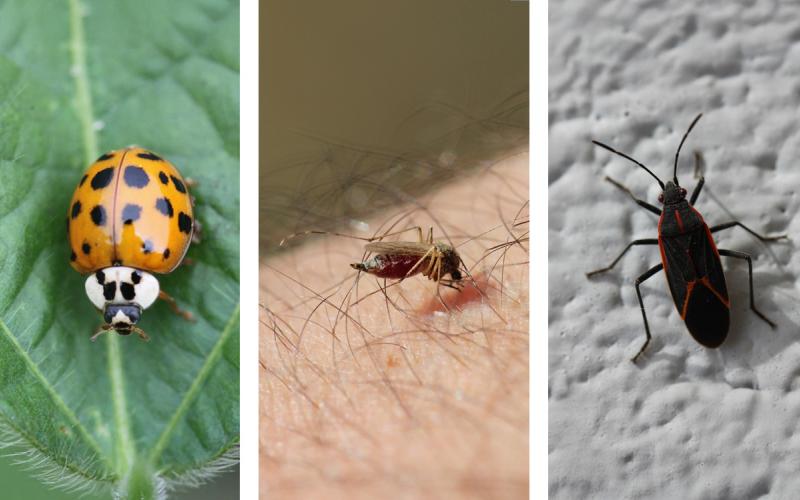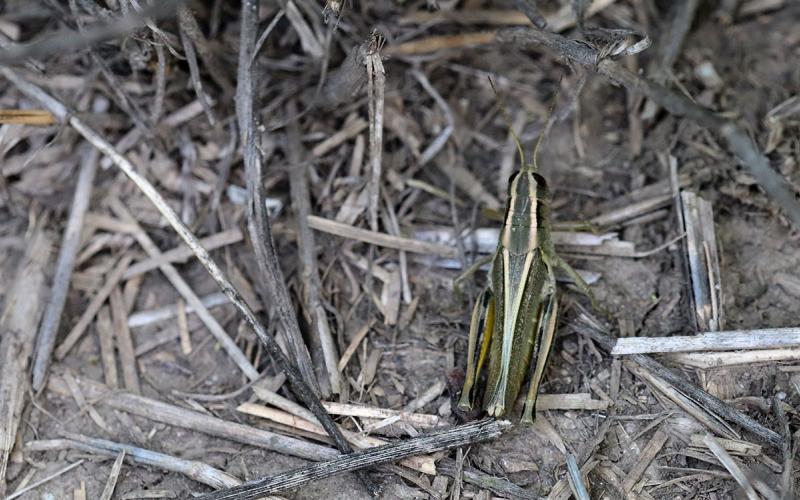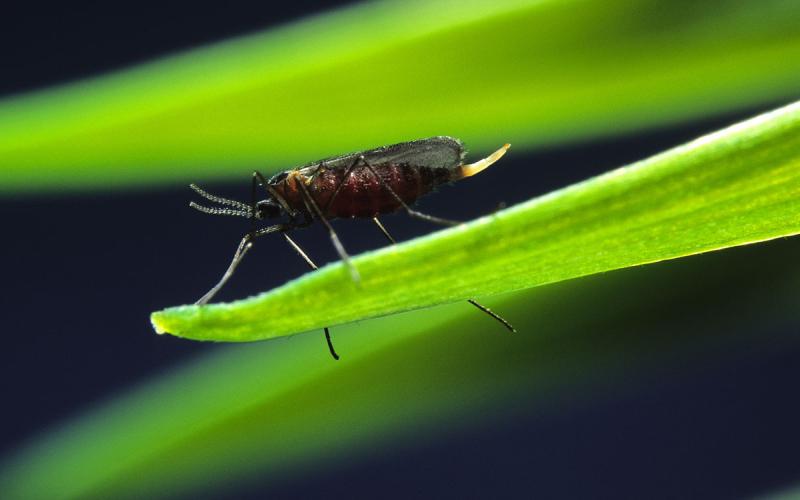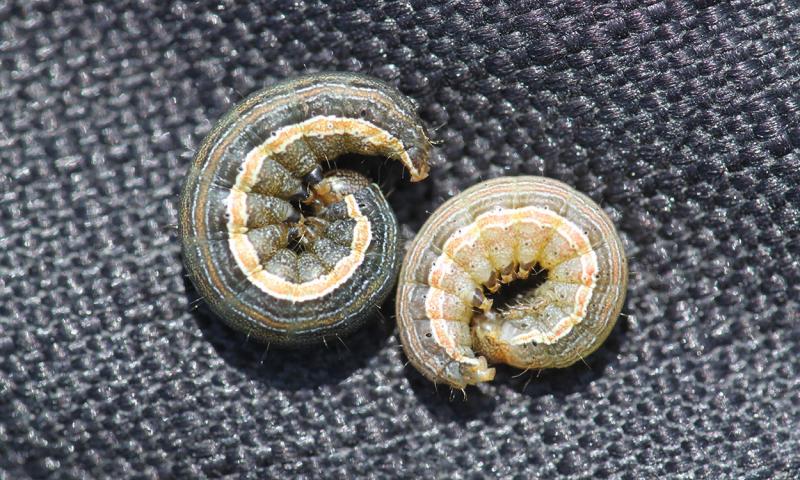
Written collaboratively by Adam Varenhorst, Philip Rozeboom, Patrick Wagner, and Brad McManus.
Originally Submitted: June 28, 2024
We have received a few reports of true armyworm caterpillars in wheat that are heavily feeding on the leaves. The big concern with true armyworm caterpillars is that they will also clip wheat heads prior to harvest, so scouting is necessary to ensure that this pest doesn’t cause yield losses. The caterpillars that are being observed ranged in size, but many were ¾-1 inch long. These caterpillars will feed for another week or so and can cause additional defoliation injury. Once caterpillars are approximately 1.5 inches long they won’t cause much more feeding injury or damage as they will soon begin pupation. True armyworms may undergo one of two generations in South Dakota.
True armyworms are migratory insects that move northward during the spring and summer from the Southern U.S. The moths are more attracted to fields that contain living ground cover (e.g., grass, weeds, early season crops). For South Dakota, the moths generally arrive during early to mid-July but for a third year in a row they arrived much earlier and are causing issues in wheat the is getting close to being ready for harvest.
Identification
Caterpillars of the true armyworm vary greatly in color from light brown to dark green or sometimes almost black within the same field (Figure 1). Fortunately, there are characteristics that can be used reliably to identify them. True armyworm caterpillars have an orange stripe on each side of their body that runs from their head to the end of their abdomen. In addition, true armyworm caterpillars will have dark bands on each of their four abdominal prolegs (Figure 2). The last characteristic is the network of black lines that are present on their orange head capsule (Figure 3).
Color
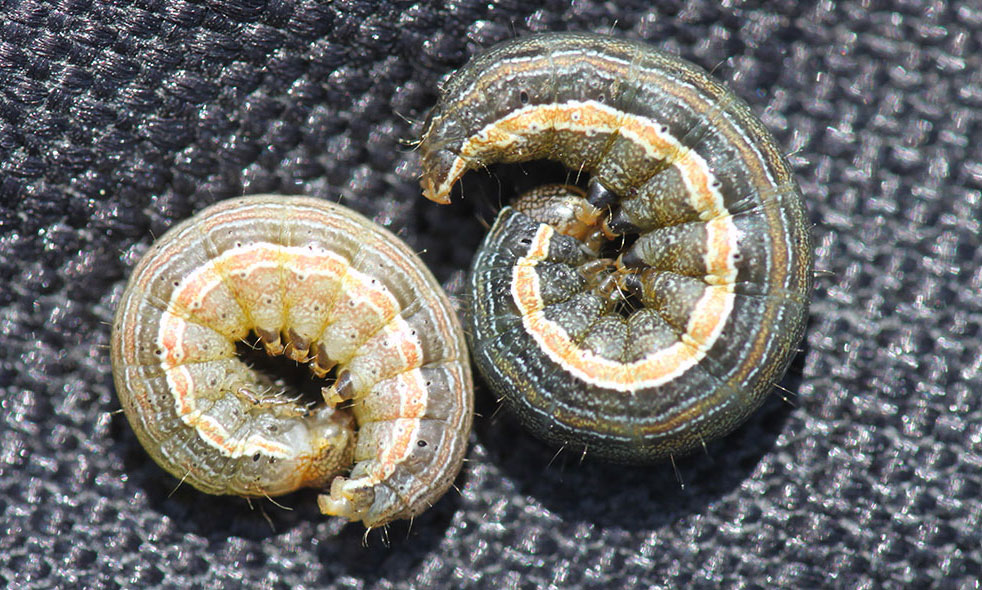
Striping
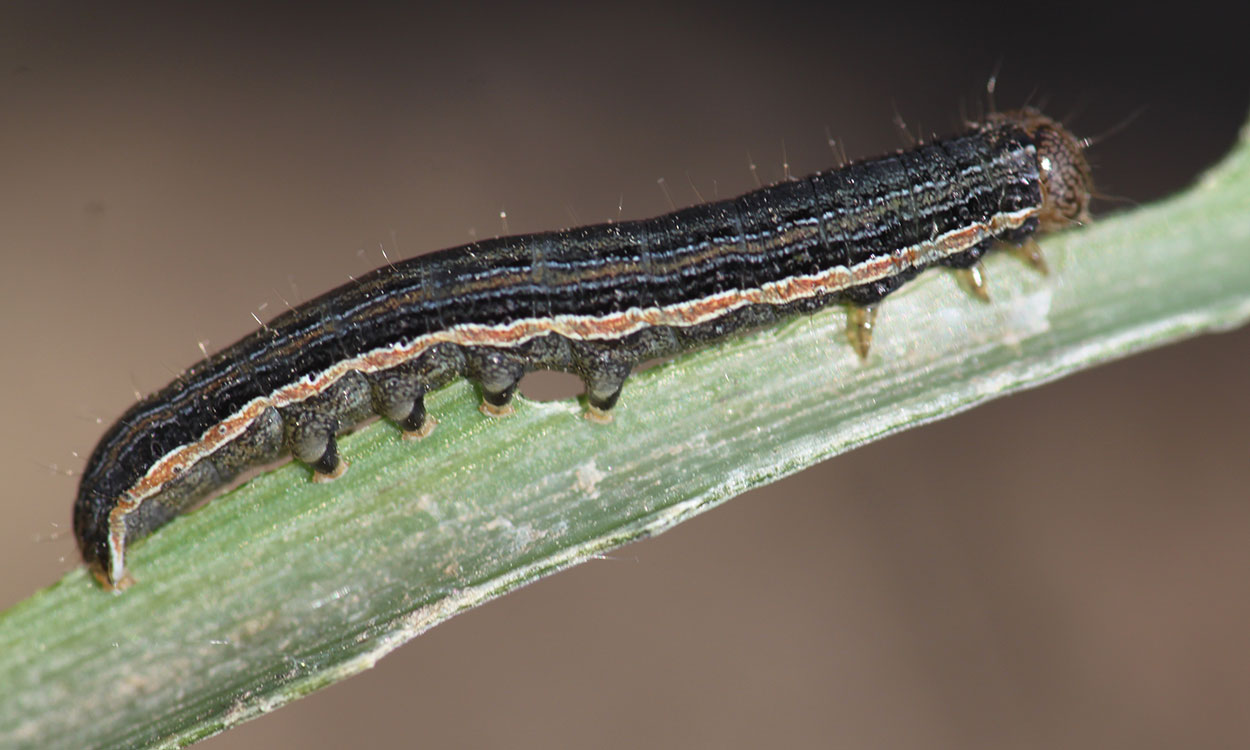
Head
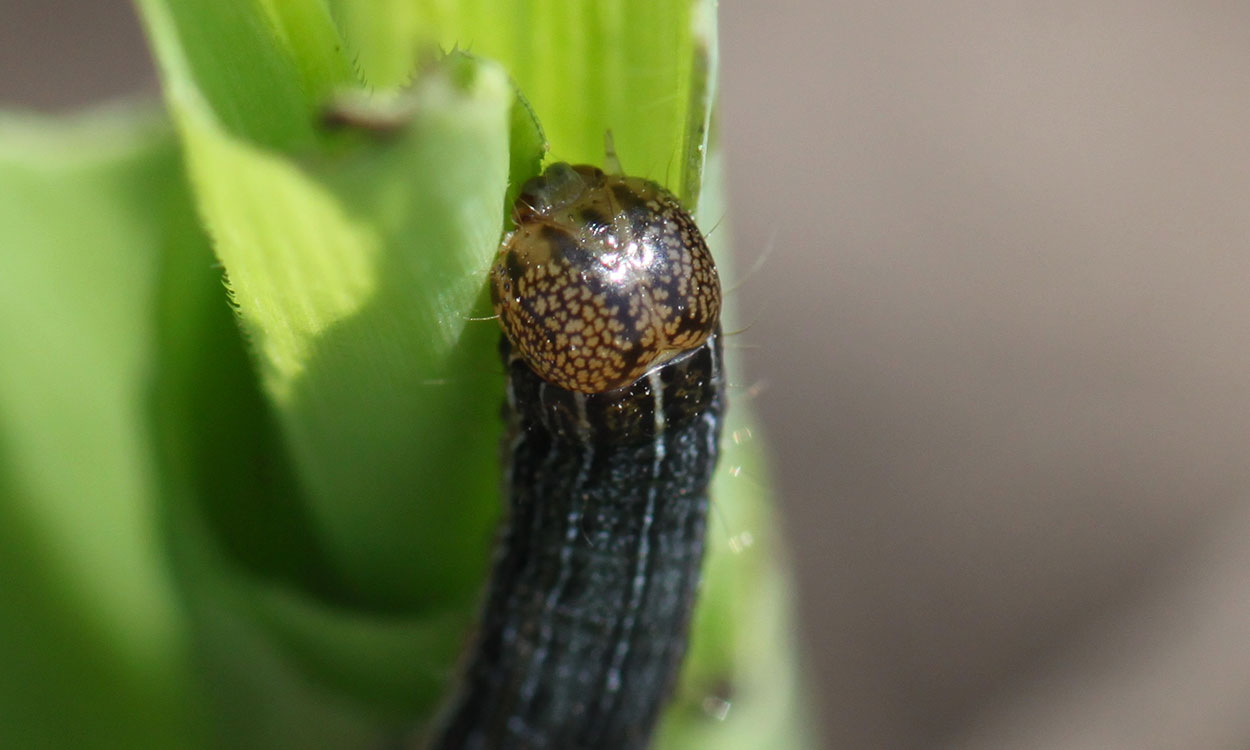
Scouting and Management
Depending on the migration timing and hatching, population density of true armyworm caterpillars can sometimes be unnoticed during a season. However, these insects are also well known for moving in large populations and causing extensive defoliation or damage to plants.
Either sweep net sampling or individual plant observations can be used to scout for true armyworm caterpillars. When scouting, the entire field should be examined. If examining individual plants, the threshold is 2 caterpillars per square yard. Sometimes the caterpillars will be found at the base of the plant or on the soil near the plant. If scouting with a sweep net, the threshold is 40 caterpillars per 30 pendulum sweeps. Remember when using a sweep net to walk in a W or Z pattern through the field.
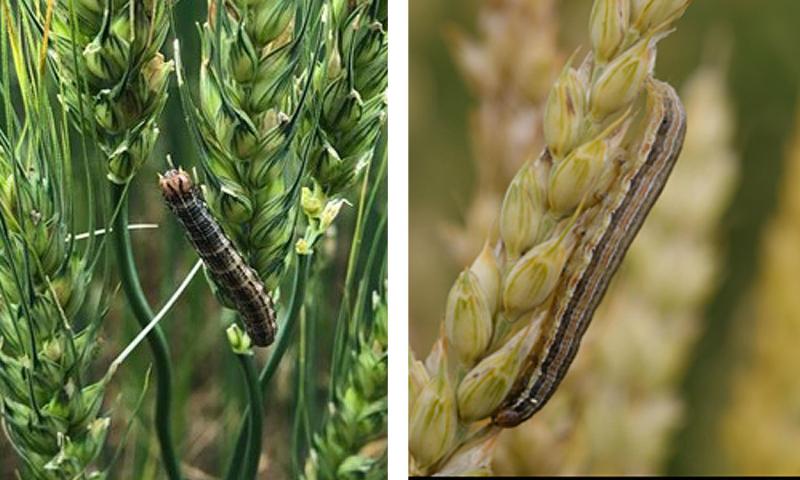
Caterpillar feeding can reduce yields, especially if the flag leaf is removed prior to the soft dough stage. If true armyworm caterpillars are observed feeding on the wheat heads prior to harvest (Figure 4) management should occur. In addition to feeding on the kernels, true armyworm caterpillars will also clip the stem near the base of the head.
If thresholds of true armyworms are exceeded, please refer to the latest South Dakota Pest Management Guide: Wheat. If management is going to occur close to harvest (for instance, head clipping, or head feeding is observed), make sure to choose an insecticide with a short pre-harvest interval (listed as PHI in the pest management guide). Choosing an insecticide with a long pre-harvest interval will delay harvest until the interval has expired.
